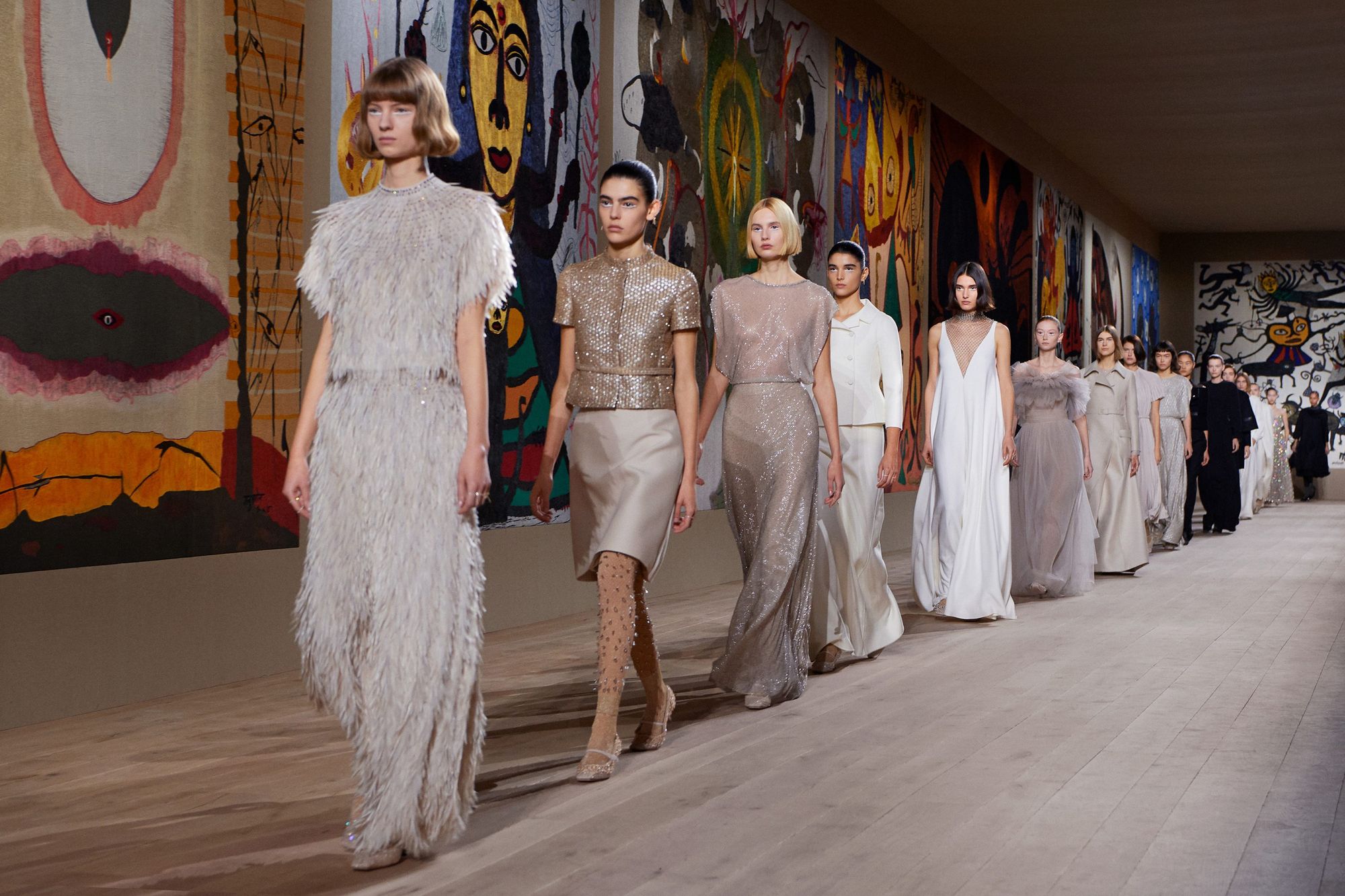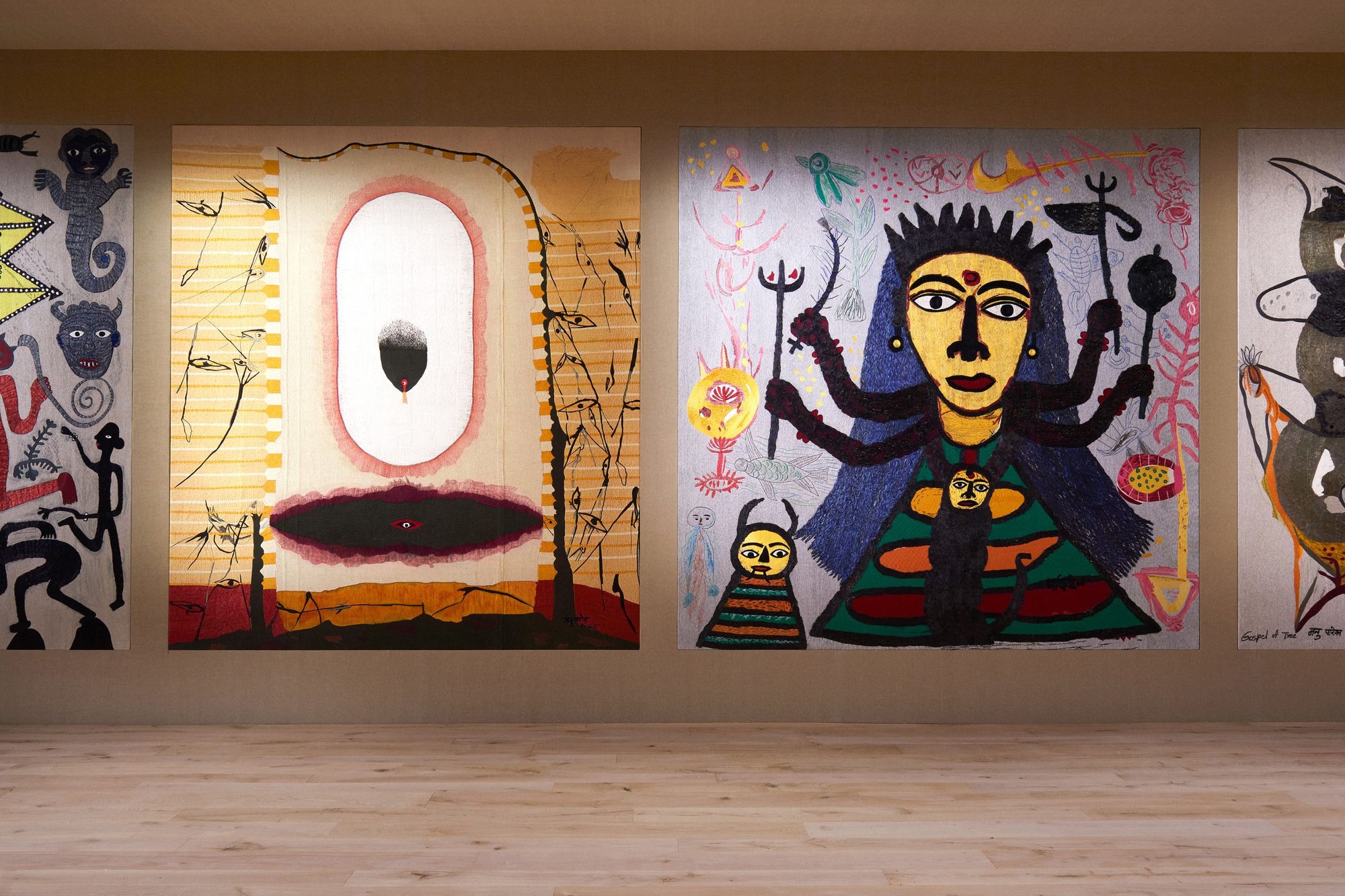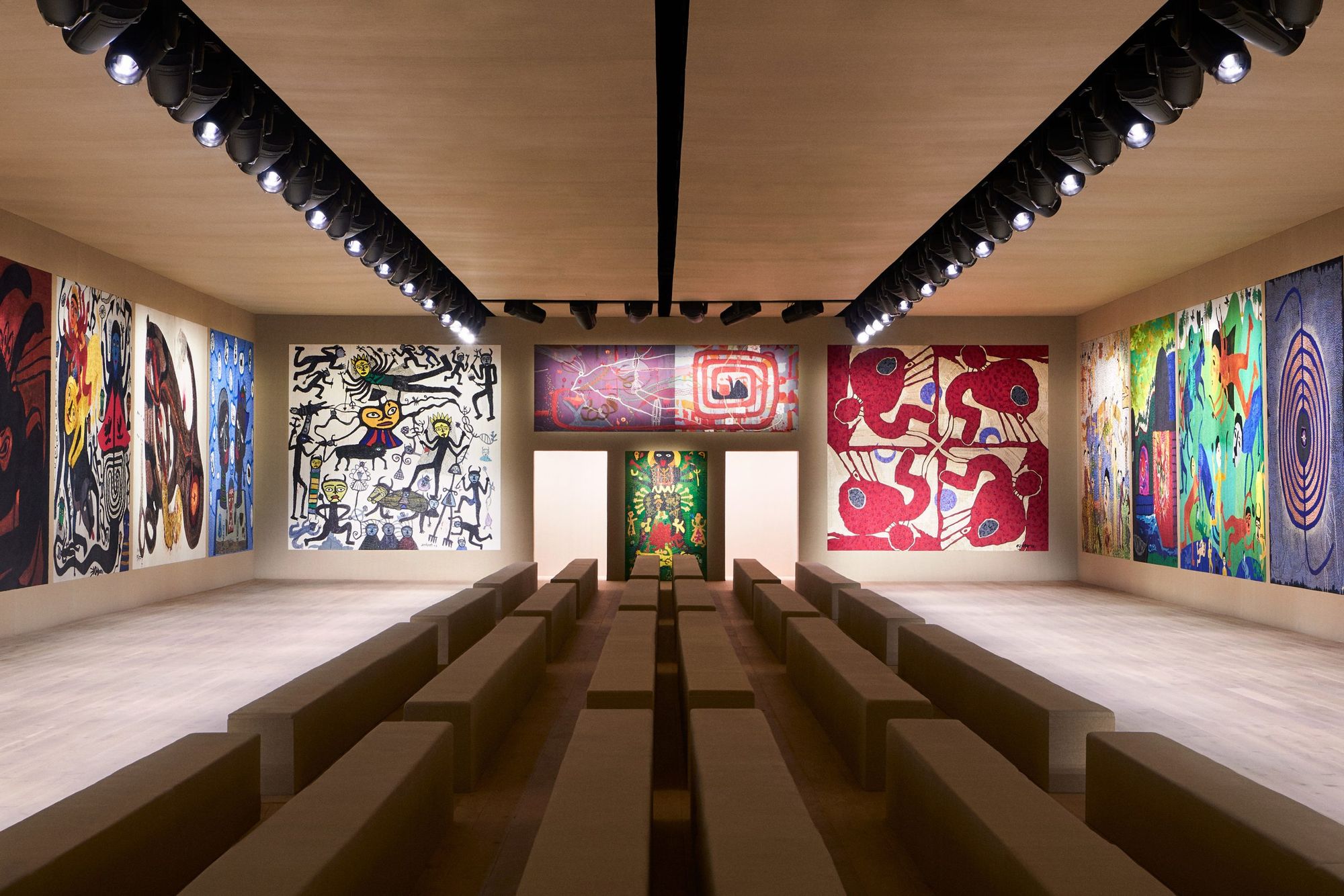The creative director Maria Grazia Chiuri’s spring-summer 2022 Dior Haute Couture premiere was held in an elegant white-blue box in the garden of the Musée Rodin in Paris. On the façade, the black-painted motif of Madhvi and Manu Parekh welcomed guests, which was transformed into colorful embroidery inside. The floor plan included a traditional U-shaped runway produced by Bureau Betak with seats in the middle. All this was surrounded by a rather minimalist interior with white walls and light natural wood flooring, but dotted with rhythmically placed colorful embroidery made by the Chanakya School of Crafts—a non-profit institute based in Mumbai dedicated to the preservation of handicrafts. The show installation remained on site until January 30, making it accessible to the general public.


In the spirit of a more sustainable way of thinking about design and architecture, expensive runway productions raise a number of questions. In early 2020, Bureau Betak responded with its “10 Commandments,” a list of rules and regulations that a fashion company will follow to reduce its carbon footprint. Commitments start with eco-conscious design, focusing on items that can be rented or reused, with the recycling of all materials and all waste. The Dior SS22 haute couture show allows for the reuse of an exclusive runway in a publicly accessible space that offers cultural entertainment and fashion education in one place.

In recent decades, designers have increasingly taken advantage of the location of fashion shows and developed their creative concepts. Classical and contemporary arts are often a recurring source of inspiration for designers, so a museum or an exhibition space no longer sounds strange for a venue. The runway architecture approach usually eliminates the effect of location on the show—allowing the show to exist regardless of the context. The Dior show was a unique case where the runway gave the venue an afterlife so that the set became an exhibition at the venue, the Musée Rodin. The set of Dior has become an open and democratic space in Paris, allowing people to connect with the art and craft heritage of the haute couture fashion.
Source: FRAME

Essence of Hungary | Győr and Pannonhalma

Is this how to achieve climate neutrality? | Debate with experts










